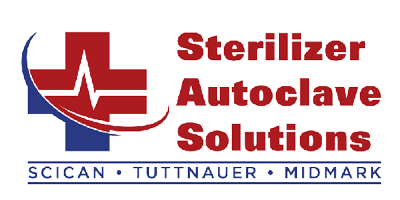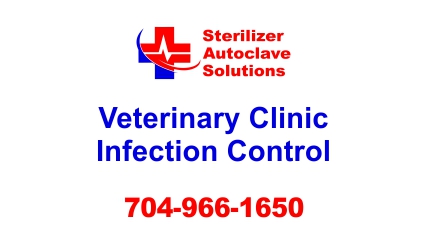Veterinary Clinic Infection Control Leave a comment
In this article, we’re going to go over the infection control of veterinary clinics. And if you just want to talk to someone, call our Free Tech Support at 704-966-1650 Option 3.
Veterinary Clinic Infection Control
Even though hospital-acquired infections (HIAs) happen to animals, they are not studied as much as human HIAs. But that does not mean they aren’t just as important and should be monitored closely. We know that animals come in contact with many things that humans don’t even consider. And unfortunately, that exposes them to many infectious substances and contaminants that can negatively impact their health. Because of this Veterinary clinics need to set up a systematic approach to preventing and controlling these infections. There is no doubt that these types of illnesses can be prevented. It just takes a dedicated staff following a fixed protocol to minimize the severity of these types of illnesses.
How do you start?
Every veterinary clinic should create and implement a detailed infection control program. There should be definitive guidelines written out specific to each practice. They should be easy to understand, copy, and share. They should also be documented and turned into an Infection Control Manual that is placed where everyone can easily access them. Many practices get help from an Infection Control Practitioner that has the training to layout and help implement a good infection control program. If you do not hire an ICP you should at least appoint someone to organize a legitimate contamination awareness program.
What areas need to be addressed?
There are three main areas to cover for an infection control program to work properly. You have to focus on three main areas of concern. Those are decreasing exposure, decreasing susceptibility, and increasing resistance.
Enforce decreasing host exposure
You have to start by identifying where the organisms can be coming from. Things like skin, wounds, fecal matter, urine, saliva, blood, and other discharges can easily be contaminated. So start by stopping exposure to these elements to reduce the risk of being contaminated and carrying the pathogens elsewhere.
Of course, there is no way to completely stop exposure to the body and fluids of a pet/patient you are examining and treating. However, the entire veterinary staff can take precautions to minimize exposure. Everyone just needs to understand and implement the contamination awareness program along with regular work conduct guidelines.
Work at decreasing host susceptibility
Start by considering how the contamination can be passed. Hand contact, clothing, airborne droplets, and insect-borne infections are some of the major paths of transmission. Minor exposure to a host doesn’t directly correspond with contamination. But combine that with the above-mentioned methods of transmission, and individual vulnerability to several infectious agents can lead to an outbreak.
Make a united effort to help with the factors in your control. Stress the importance of routine handwashing by all staff, and assure proper sterilization practices are being followed. Weigh the pros and cons of antimicrobial and other drug administration. Ensure that any underlying diseases are properly managed. And be certain that owners understand the proper nutritional needs of their pets.
Help increase host resistance
Increasing host resistance is usually considered only after decreasing exposure and susceptibility. But that doesn’t mean it should be neglected or thought of as less important. Always put procedures in place to actively maximize pet/patient and staff resiliency and immunity. Ensure all vaccines are up to date in patients and employees. Likewise, you should immunize against any microorganism threats that vaccines are currently available for.
A good shield against contamination is anti-parasite therapy. And measure moderation of antimicrobial prescriptions and limit them for maximum effectiveness. Because infection can still happen even with your best efforts.
Of course there is nothing that is 100% effective including vaccines. Unfortunately, many HAIs occur from a microorganism that has no vaccine yet. But increasing host resistance along with the other host resistance methods will help boost resilience as well as help a veterinary clinic control outbreaks.
Establishing a thorough surveillance program
Continuing passive and active surveillance of your clinic, staff, and patients is extremely helpful in identifying any fluctuations in an infection control program. This can actually diagnose and quickly stop a risk of or actual contamination. For this reason surveillance of some form should be ongoing by staff. Your ICP should always keep track of and report on this activity.
Passive Surveillance
Passive surveillance is just the analysis of data that is readily available from your clinic and the general population. It takes the least effort and should be continually in the absence of an actual outbreak.
Internet research, taking bacterial cultures, testing for infectious diseases, and monitoring your patients antimicrobial drugs are some of the ways to keep track. More challenging but just as important is the monitoring of recently released patients. Some HAIs may not show until they are home because of longer incubation times.
Easy access for analysis is crucial for monitoring all the data you gather. You must (with your ISP) be able to find your data quickly and efficiently. By organizing the data it becomes much easier to evaluate in order to identify any potential infectious outbreaks before they get out of hand. This also helps with smoother development of your active surveillance practices.
Active Surveillance
Reducing infections and pet-patient healthy turnaround are the major goals when an outbreak does strike. Gathering specific data by sampling organic data at the time of the outbreak is extremely important. You should swab, urine sample, and blood test every animal that comes through your clinic. And this should be done if the0714y are showing signs of infection or not. It may seem costly and take more time, but this is the most reliable way of identifying, controlling, and stopping an outbreak from spreading any further.
Best practices for reducing risks
The importance of continual hygiene and other risk reducing strategies cannot be stressed enough. Substandard personal hygiene, insufficient cleaning, and inferior disinfection practices can substantially increase infection risks. This in turn can directly affect your pet-patient, their owners, you, and your staff. Hand hygiene, protective clothing, waste and laundry management, disinfection, and sterilization are essential risk reducing strategies.
We want to help
At Sterilizer Autoclave Solutions we are very passionate about sterilization and disinfection in all areas of need or concern. We sell, repair, and give free technical support on many types of sterilizers and disinfectants. Our main goal is that everyone not only uses the proper equipment, but more importantly understand the equipment and products they are using. Please feel free to call us anytime with any questions or needs you may have.
We currently offer the veterinary specific line of Tuttnauer TVet Veterinary Autoclaves as well as many types of disinfectant wipes and solutions to help you with your Risk Reduction and Infection Control Programs.
See the Tuttnauer TVet Veterinary Autoclaves Here
Cleaner and Disinfectants Currently Available
As always if you have any questions about this process or anything else please feel free to contact us and take advantage of our “FREE TECH SUPPORT.”
We also offer FREE VIRTUAL TECH SUPPORT to “See and Talk” with a “Real Time Live Technician” for any problems you may be in need of help with.
You can also use our “FREE MAINTENANCE PROGRAM”. Take the guesswork and worrying about what unit is due for maintenance and which maintenance cycle it is time for. We will keep track of all your autoclaves and let you know when it’s time for anything.


